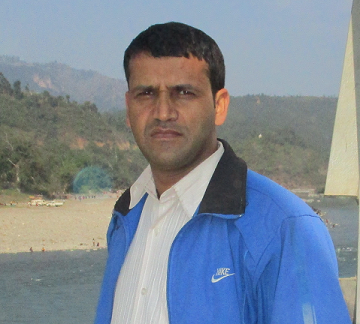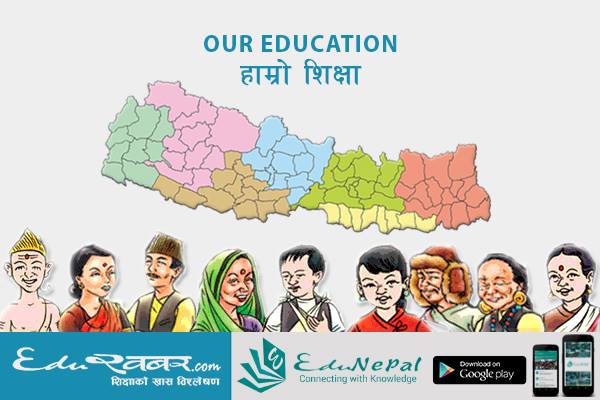
Politics and management of community education are directly or indirectly related to each other. The different political changes or policy measures introduced while implementing federal set up during the restructuring of the state have affected education at the community schools. Last year, the Teachers Service Commission decided to conduct examination for temporary teachers trying to secure permanent position. Many schools announced measures for teachers attending such examination. Teachers preparing for examination had reached their respective centres almost a week before the examination. However, another group had announced fast unto death and were protesting against the move. The election of local bodies obstructed the regular classes in schools for 10 days.
The schools closed for festivals like Dashain, Tihar and Chhath. Immediately after the festival holidays were over, there were elections for provincial and federal assemblies. They further obstructed classes at schools. No sides expressed their willingness not to set up polling centres inside the school premises. Officially the government announced five days of holidays. There was joy and enthusiasm in teachers. Informally, the classes were affected for more than two weeks. The Education Department sent dispatched a letter to schools asking them to shorten their winter vacation to bridge the gap created by election holidays. A teacher posted the letter in social media, challenging the move. Several other teachers argued that holiday was their right and winter vacation cannot be shortened. I am not trying to generalise this as the common aspiration of all teachers. However, teachers in many community schools are filled with joy when there are additional public holidays. This shows that there is lack of commitment towards teaching and enhancing learning of students. It has been more than six months that elections of local bodies have been held in all other provinces except province number two. Some local bodies have conducted discussion, debate and interaction regarding educational reform. These are positive however in such discussions and interactions it appears that learning at classrooms is not the priority issue. Students at third grade are not able to identify alphabets, fifth graders are unable to solve minor mathematical problems but they are not the agendas of the discussion.
The local governance act of 2074 has entrusted the responsibility of policy formulation, planning, implementation, monitoring and quality assurance to local bodies. Teachers are the main drivers for educational reform. They have not reacted positively yet to the responsibilities allocated by the local governance functioning act. They have been formally and informally stating their desire not to be under the local bodies. If teachers, the agent of change, are not accepting the role of the local governments, it will be really tough for the local governments to bring the much needed reforms and manage the public education of the country. The local bodies need to follow some of these suggestions and work in coordination with the teachers.

a) Decide on the number of schools required in the rural municipalities and municipalities by measuring the population of students enrolled in schools, population out of schools, and number of schools in existence among others. They should also ascertain whether any new schools are required or not. If new schools are required, they should determine numbers and places and should also look into the possibility of mergers. They should make a ten year plan and look into the possibility of resources and management.
b) Calculate the number of teachers and students inside the rural municipalities and municipalities. Determine the student teachers ratio. Look into the availability of subject teachers above the sixth grade. Look into managing the required positions of empty vacancies. If new teachers are required, determining the number of teachers based on the disciplines. Apart from this, conducting discussion on management of teachers. Also looking into the option that how many post of teachers can the local bodies fill up on their own? Also deciding whether they need support of federal or provincial government to fill up the empty positions of teachers. Checking into the availability of teachers in the nearest rural municipalities and municipalities. Can required posts be filled through transfers? Such options should be considered. In the absence of adequate number of skilled and motivated number of teachers, the quality of education can not improve.
c) One of the major problems in the rural schools is the poor attendance of students. The local governments should interact with the guardians to find a solution of this. The causes of the poor attendance are mainly the household situation, students, schools and parents among others. The cause of such dismal attendance should be identified. Students belonging to families with poor economic background cannot attend classes on a regular basis. So, the local bodies need to work with the parents and find out ways to address this.
d) There is also the problem in attendance of teachers at the community schools. There are many dimensions to this. First, many teachers do not attend in schools on a regular basis and those who attend also come late. Some even skip classrooms and those who go do not give their full time to classes. The local bodies should identify the schools where this problem exists. They should also find out the teachers showing such behavior. They can conduct discussion, monitoring and implement measures to address these issues. They should prepare options to address the problems after conducting discussion with schools and teachers. If we look into the 190 lectures that a teacher is supposed to deliver at classroom in one academic year and assume that he/she wastes five minutes per day, there will be a waste of 950 minutes in a year. If we assume there will be classes of 45 minutes per day, the time amounts to 21 classes which is an enormous loss. If we utilise this time in an efficient manner, we can made student capable of resolving a problem worth 3 to 5 marks in any examination.
e) Teachers and schools are the implementing agents of the school reform plan. The local bodies should identify the problem, find the solutions, motivate the teachers towards their duty and coordinate with them to ensure qualitative changes in the public education sector.
प्रतिक्रिया